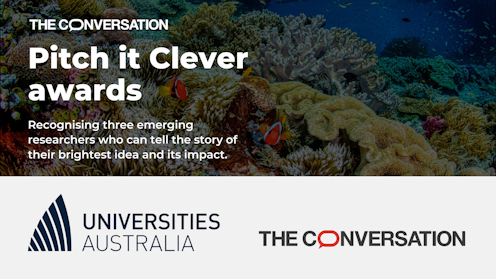
The Pitch it Clever awards celebrate the work of researchers who have produced a one to two minute video explaining their work and its impact on the world.
Each year, hundreds of early-career researchers enter the awards, producing stunning short videos on everything from advances in bionic hearing devices to the next generation of batteries.
The awards are run by Universities Australia and The Conversation sponsors the Vice Chancellor’s award to help researchers develop the skills to share their work with the broader community.

The Vice Chancellors’ Award: Kazi Yasin Islam
Edith Cowan University researcher Kazi Yasin Islam won the Vice Chancellors’ Award for his idea to develop innovative wireless technology that can be used underwater.
“The realisation that a wide range of research fields can benefit from my own research… has inspired me to pursue research in energy-efficient underwater wireless communications,” he said.
Kazi will now complete an internship at The Conversation’s Melbourne headquarters to continue honing his story pitching and research communication skills, alongside winning $3,500 and a ticket to the 2022 Universities Australia conference.
The Universities Australia Award: Kristyn Sommer
Kristyn Sommer from Griffith University won the Universities Australia Award for her research on how robot design and programming impacts children’s learning.
“I am ecstatic to be awarded a Pitch it Clever prize for my research,” said Kristyn, who uses TikTok and Instagram to break down complex scientific problems for her more than 400,000 followers.
People’s Choice Award: Nirmal Madhavanpillai Sajeevkumar
Swinburne University of Technology researcher Nirmal Madhavanpillai Sajeevkumar’s won the People’s Choice Award for his research making steelmaking more sustainable, which attracted over 1300 votes from the community.
“Undertaking this PhD has been a truly life-changing experience for me,” Nirmal said. “The effect of global warming is hitting us and as a researcher, ways to decarburize the steel industry is the need of the hour.
"My research sought to understand the energy aspects of the oxygen steelmaking process which helped us to tackle most of the pressing problems that the industry faces at the moment.”
This article was originally published on The Conversation. Read the original article.







